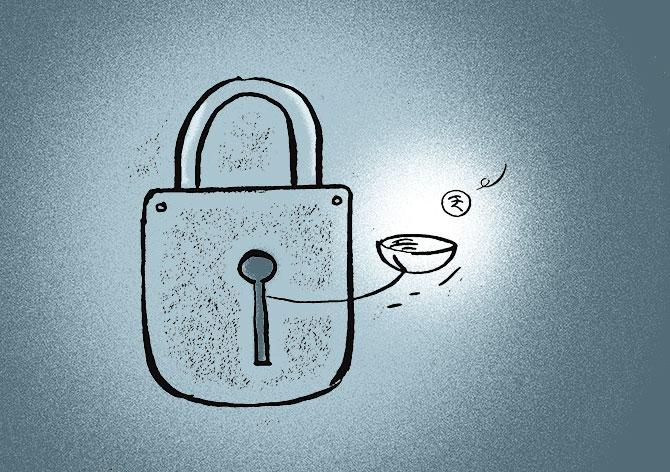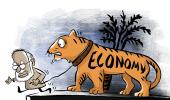With the world's worst outbreak of COVID pandemic stalling a nascent economic recovery, the government has begun assessing the impact of the second wave of infections on different sectors and may look at providing support at an appropriate time to segments requiring fiscal help.

Some of the economic indicators, including the Goods and Services Tax (GST) collections, still provide confidence and incoming data will throw some more light on the state of the economy, sources said.
Services sectors like hospitality, tourism and aviation which had just started recovering were hit hard by the second wave of COVID, the sources said, adding these segments might need some support on an urgent basis from the government.
Besides, MSME sector, the second highest employer after agriculture, has been impacted very much and would require financial assistance.
The government might tweak the existing Emergency Credit Line Guarantee Scheme to provide immediate help to the sector, the sources added.
Currently, around 6.5 crore Micro, Small and Medium Enterprises (MSMEs) contribute 30 per cent of the GDP.
Recently, the RBI also announced a loan restructuring scheme for small borrowers amid the pandemic.
However, the sources said that fiscal stimulus would be effective only once local lockdowns ease and restrictions on business due to curfews are lifted.
Most of the states have imposed curfews in their states to contain spiralling COVID infections and deaths.
Also, the second COVID wave has dealt a blow to both consumer and investor sentiments, which also need to be lifted.
The sources said that Niti Aayog is working on the focus areas of economy and what could be done to stimulate demand in sectors that have been impacted the most by COVID.
Once NITI Aayog suggests a plan, the finance ministry would decide on the way forward, they added.
Both monetary and fiscal policies are directed towards boosting the Indian economy which is expected to grow in double digits during the current financial year despite the devastating second wave as per the revised outlook by many organisations, including the Reserve Bank of India (RBI), the sources pointed out.
Last month, the RBI retained its growth forecast at 10.5 per cent for the current financial year while ADB projected a growth rate of 11 per cent for this fiscal.
However, rating agencies have lowered growth forecasts for India saying that the second wave of infections will hamper economic recovery.
They, however, projected that the negative impact on economic output will be limited to the April-June quarter.
Moody's has projected growth of 9.3 per cent for current fiscal, lower than 13.7 per cent estimated earlier.
S&P Global Ratings has said growth could drop to 9.8 per cent in a 'moderate' scenario of infections, and could be even as low as 8.2 per cent in a 'severe' scenario. S&P had earlier estimated growth of 11 per cent for the current fiscal.
According to Fitch Ratings, India's slow pace of vaccination could mean that the country remains vulnerable to further waves of the pandemic.
As per the official estimate, the country's economy is projected to contract by 8 per cent in 2020-21.
India became a global hotspot for the pandemic with daily fresh cases of touching a record high of 4.12 lakh.
The count of infections has crossed 2.69 crore since the virus surfaced in China more than a year ago and death toll is more than three lakhs.
According to some COVID models, certain parts of the country are gradually reaching a peak in terms of COVID cases and also a significant drop in positivity rate.
In 2020, the Union government announced the 'Aatmanirbhar Bharat' package to perk up the economy and the overall stimulus was estimated to be worth around Rs 27.1 lakh crore, which was more than 13 per cent of the national GDP.
To mitigate the impact of the pandemic on the economy, the government and the RBI also came out with a series of packages in a phased manner totalling around Rs 30 lakh crore, which is 15 per cent of the national GDP.
Soon after the pandemic hit the country and a nationwide lockdown was imposed, the government, in March 2020, announced a Rs 1.70 lakh crore-Pradhan Mantri Garib Kalyan Yojana (PMGKP) to protect the poor and vulnerable from the impact of the pandemic.
It was followed by the Aatmanirbhar Bharat Abhiyan package in May 2020 largely focussed on supply-side measures and long-term reforms.
To boost consumption during the festival season, the government, in October 2020, announced measures that were worth close to Rs 73,000 crore to stimulate consumer spending in an effort to rein in the slowdown due to the pandemic.
Aatmanirbhar Bharat Abhiyaan 3.0 unveiled in November 2020, ahead of Diwali, was worth Rs 2.65 lakh crore. Of the total amount, the maximum of Rs 1.45 lakh crore was allocated to give a boost to manufacturing activites.










